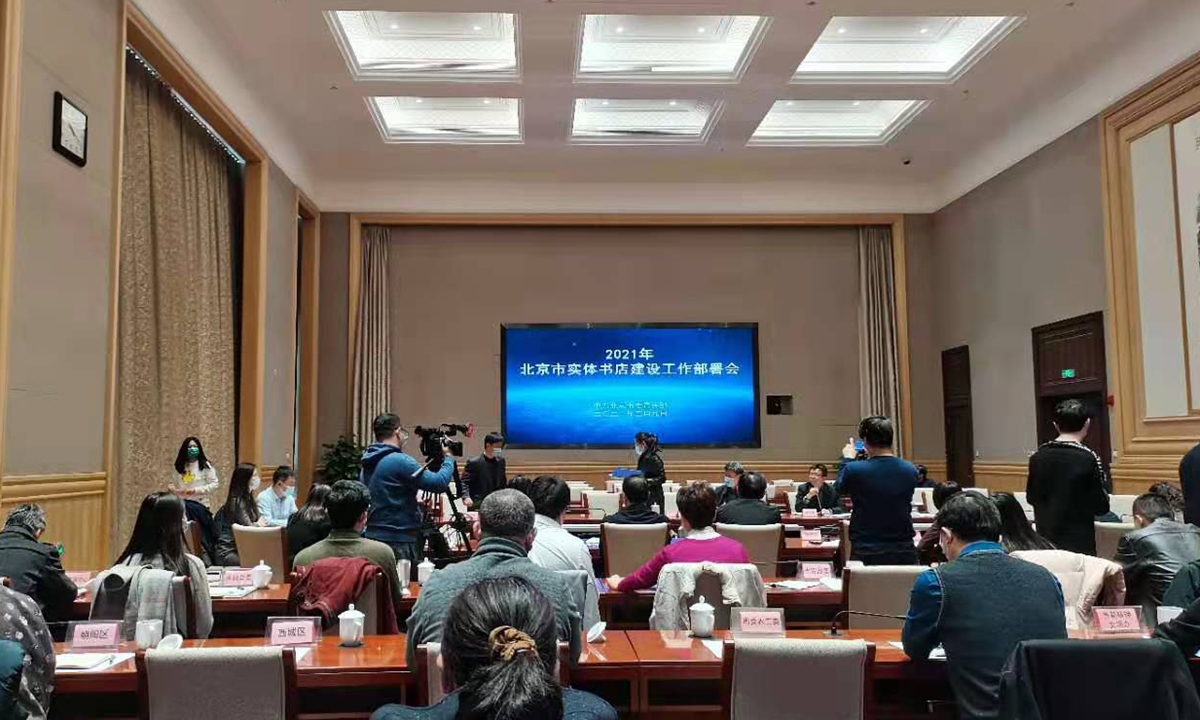
A photo of the conference held by the Publicity Department of the Beijing Municipal Committee of the Communist Party of China. Photo: courtesy of the event.
A conference focusing on the development schemes of bookstores in Beijing was held by the Publicity Department of the Beijing Municipal Committee of the Communist Party of China on Tuesday in Beijing.
There were four major agendas at the meeting. The first was a debriefing on the general development of bookstores in Beijing in 2020. During the second, representatives of districts such as Haidian, Shunyi and Tongzhou gave presentations to summarize the regional achievements of bookstore development in 2020. Third, the representatives of Beijing's various districts and a municipal-level representative signed commitment agreements to continue the development of bookstores in 2021. Fourth, a survey report on the reading index of the city's residents in 2020 was introduced.
At the conclusion of the meeting, Wang Yefei, deputy director of the Publicity Department of the Beijing Municipal Party Committee, delivered a speech on the further development of Beijing's old and newly emerged bookstores.
By December 31, 2020, there were a total of 1,994 bookstores in operation in the capital, of which more than 40 were around 1,000 square meters in size, while seven large comprehensive bookstores were around 7,000 square meters in size. The variety of bookstores in Beijing remain very diverse, with some holding on to more classic styles and others seeking to be more fashionable to appeal to young readers.
Launching diverse cultural and creative projects was one method used to rejuvenate Beijing's bookstores in 2020. It is expected that this trend will continue in 2021 with the goal of transforming some of these isolated bookstores into cultural centers that can inspire people's interest in reading and communication.
The Shunyi district in the northeast of the capital has been implementing a creative cultural transformation plan to develop its local bookshops. A new bookstore around 2,000 square meters in size is set to become the district's newest landmark when it opens in June.
The Tongzhou in the southeast of the capital has also shown it values the creative transformation of local bookshops. It seeks to combine bookshops with cultural tourism by bringing local stores into tourist parks and scenic spots.
According to the survey of more than 100,0000 residents across 16 districts in Beijing, the Xicheng, Chaoyang, Haidian, Dongcheng and Shijingshan districts are the five areas with the most active readers, with Xicheng taking the lead. Additionally, the average spending for an adult resident in the capital on print books in 2020 was 236 yuan ($36).




